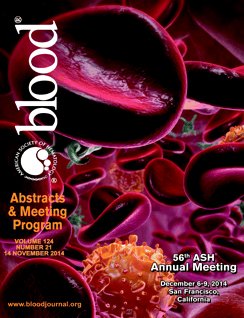Abstract
Background: EDO-S101 is a first-in-class alkylating histone-deacetylase inhibitor (HDACi) fusion molecule that combines the strong DNA damaging effect of bendamustine, with a fully functional pan-HDAC inhibitor, vorinostat. Bendamustine has substantial clinical activity against B-cell malignancies, lacks cross resistance with many other anticancer drugs, has superior antimyeloma activity compared to melphalan, and can safely be combined with proteasome inhibitors. The Histone deacetylase inhibitor (HDACi) vorinostat has a broad spectrum of epigenetic activities and sensitizes lymphoma and myeloma cells for a variety of cytotoxic drugs. Vorinostat in particular has a strong synergy with proteasome inhibitors, presumably due to the inhibition of HDAC6. HDAC6 allows polyubiquitinated substrate protein to bypass the inhibited proteasome towards degradation via the autophagy pathway. The EDO-S101 molecule was designed to create a very potent cytotoxic agent for systemic use upon exploiting the synergies of a bi-functional mode of action.
Methods: The aim of the in vitro study was to compare the cytotoxicity of EDO-S101 against Multiple Myeloma (MM), leukemia and lymphoma cells with established alkylating agents and to investigate its cellular and molecular effects in combination with proteasome inhibitors.
Results: The IC50 of EDO-S101 ranged between 5-13 μM in 8 myeloma cell lines and thus one order of magnitude lower than the IC50 for bendamustine (70 - > 200 μM). Myeloma cell lines with adaptive resistance against bortezomib or carfilzomib did not differ from non-adapted cells in their IC50 for EDO-S101. Likewise, the IC50 for 3 ABC type DLBCL cell lines ranged between 3-8 μM for EDO-S101, compared to bendamustine > 50 μM. EDO-S101 had significant synergistic cytotoxicity with the proteasome inhibitors bortezomib and carfilzomib across all cell types tested, in contrast to melphalan and bendamustine. In a panel of 6 MM cell lines, the combination of EDO-S101 yielded a mean combination index for synergistic cytotoxicity of 0.12 (± 0.06) and 0.08 (± 0.06) for bortezomib or carfilzomib combinations, respectively (with values < 0.8 indicating significant synergism), in contrast to bendamustine 1.35 (± 0.87) and 1.29 (± 0.86), and melphalan 1.09 (± 0.66) and 1.20 (± 1.44). Likewise, EDO-S101 showed synergistic cytotoxicity with bortezomib and carfilzomib against mantle cell lymphoma cells (mean CIs 0.6 and 0.2), in contrast to bendamustine (CIs 1.72, 1.22) and melphalan (CIs 1.16 and 1.17), as well as ABC type DLBCL (CIs 0.32 and 0.28 for EDO S-101, compared to 15 and 34 for bendamustine and 0.87 and 0.78 for melphalan). To dissect the molecular mechanism for the unique synergistic cytotoxicity of EDO-S101 with proteasome inhibition, which contrasted to the established alkylating drugs, we analysed proteasome activity, protein acetylation status, accumulation of polyubiquitinated proteins as well as regulatory and effector proteins of the unfolded protein response (UPR) in RPMI8226 myeloma cells by western blot. EDO-S101 induced strong protein and histone acetylation, confirming its HDACi-like activity. Interestingly, and in contrast to bendamustine, melphalan and vorinostat, EDO-S101 was a strong inducer of pIRE-1, the key activator protein of the UPR in MM cells. IRE1 activation and induction of the UPR have recently been shown to be the major determinants of proteasome inhibitor sensitivity in human MM.
Conclusions: We conclude that EDO-S101, an alkylating HDAC inhibitor fusion molecule, displays bi-functional activity. Compared to bendamustine and melphalan, it has superior monoactivity in vitro against hematologic malignancies including MM, mantle cell lymphoma and ABC type DLBCL. Of particular interest is the strong synergy of EDO-S101 with proteasome inhibitors which also stands out in comparison to the established alkylating agents. The latter is associated with induction of pIRE1, the key regulator of the UPR by EDO- S101. Both, the superior monoactivity of EDO-S101 and its mechanism-based synergy with proteasome inhibitors warrant further development of the compound towards clinical testing.
Driessen:Mundipharma: Membership on an entity's Board of Directors or advisory committees, Research Funding.
Author notes
Asterisk with author names denotes non-ASH members.

